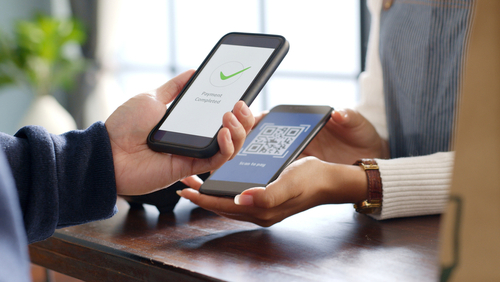Open your camera and connect to a whole new world of professional interactions. Sales and marketing executives face a growing challenge: traditional networking methods struggle with sustainability and global connectivity. Picture this: You’re at a bustling industry conference, handing out paper business cards left and right. Fast forward a week, and 88% of your cards have found their way to the recycling bin, tossed out by potential sales leads who couldn’t be bothered to type in your email address. It’s not just a waste of paper (roughly 8 billion business cards per year are thrown out within a week), it’s a missed opportunity for lasting, global connections.
Enter digital business cards (DBC) and QR codes. These tools aren’t just transforming the art of networking; they’re revolutionizing interactions while bridging cultural divides in our diverse work environments. By making your professional identity as dynamic as your business strategy, they offer a sustainable solution that transcends borders and enhances the insights we gain from our connections.
Multiple Challenges, One Solution
Traditional business cards, once the cornerstone of professional networking, are struggling to keep pace in our digital, global business landscape. Beyond the environmental toll of high energy consumption, water usage and waste creation, these static cards fail to address the dynamic nature of modern careers. About 63% of people discard business cards simply because they don’t need the service at that moment, highlighting the disconnect between instant connections and lasting relationships.
DBCs and QR codes offer a compelling solution. With a quick scan, these tools share contact details in the form of rich, multimedia content about you and your brand. They’re easily updated, ensuring your network always has your current information. More importantly, they provide invaluable insights: track views, measure engagement, and seamlessly integrate with CRM systems.
As the number of U.S. smartphone users scanning QR codes is set to reach 99.5 million by 2025, digital business cards are no passing trend. They are bridging the gap between our physical and digital worlds, making networking more efficient, sustainable, and insightful than ever before.
How to Leverage Digital Business Cards in Sales and Marketing
Creating an effective digital business card starts with clarity and purpose. Here are some effective strategies:
- Design for impact: Ensure your digital card reflects your brand with a clean layout, high-quality images and updated information. Include links to your best work or relevant social profiles to showcase your expertise.
- Optimize for easy sharing: Digital cards eliminate the need to carry physical copies. You can share digital cards in various ways – add your card to Apple Wallet or Google Wallet, and create a QR code version to expand your networking reach.
- Prioritize essential information: Ensure that your digital card includes your name, title, company, phone number, email, website, and social network profile links.
- Use analytics to refine your approach: Utilize built-in analytics tools to monitor card views, contact saves, and click-through rates. Refine your networking strategy based on the elements that drive the most engagement.
- Enable lead capture: Choose a platform with two-way contact-sharing capabilities, allowing recipients to submit their details directly.
- Tailor for diverse audiences: Create multiple versions of your card for different markets or languages.
Sales Team Success with Digital Business Cards
Lionsgate, a major entertainment company, faced challenges in networking effectively at industry conferences and events. Potential contacts often discarded their traditional paper business cards, leading to missed connections and lost opportunities.
To address this, the company implemented digital business cards for its marketing and sales teams. These cards were easily accessible through Apple Wallet and featured QR codes for quick sharing. The digital format allowed for real-time updates to contact information and promotional content.
The results were impressive:
- Increased engagement at conferences and one-on-one meetings
- Improved tracking of networking efforts across 65 cities
- Over 12,000 meaningful interactions recorded
- Significant reduction in printing costs and environmental impact
Team members reported that having their DBCs readily available in their mobile wallets made networking more efficient and professional. The ability to quickly share and update information on the go led to more connections, better tracking, and improved sales and marketing outcomes.
DBCs are powerful tools for sustainable, global networking. By embracing this technology, sales and marketing executives can bridge cultural divides, track engagement, and create lasting impressions – all while reducing their environmental footprint and maximizing the return on their networking efforts.





